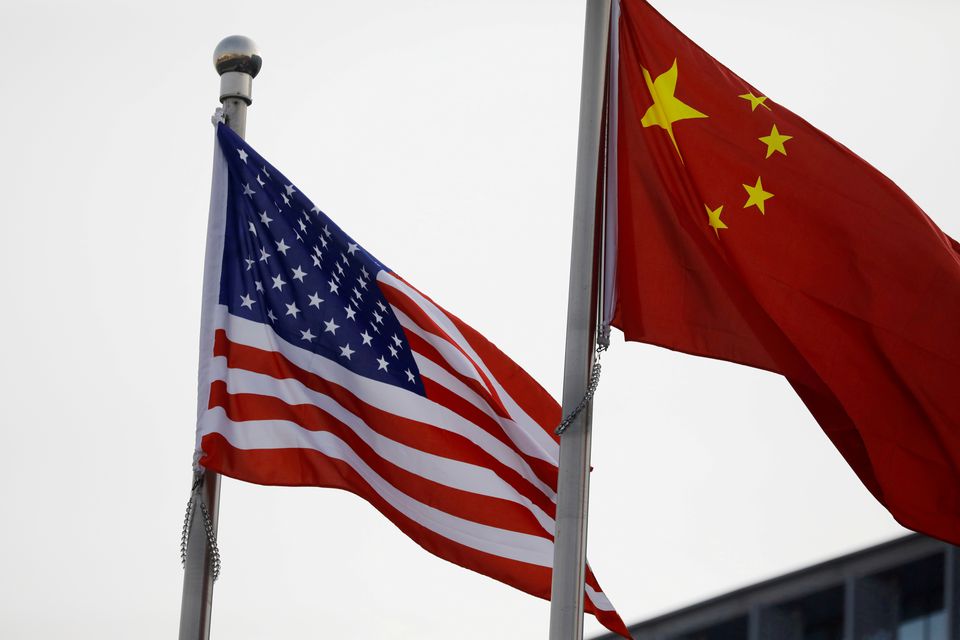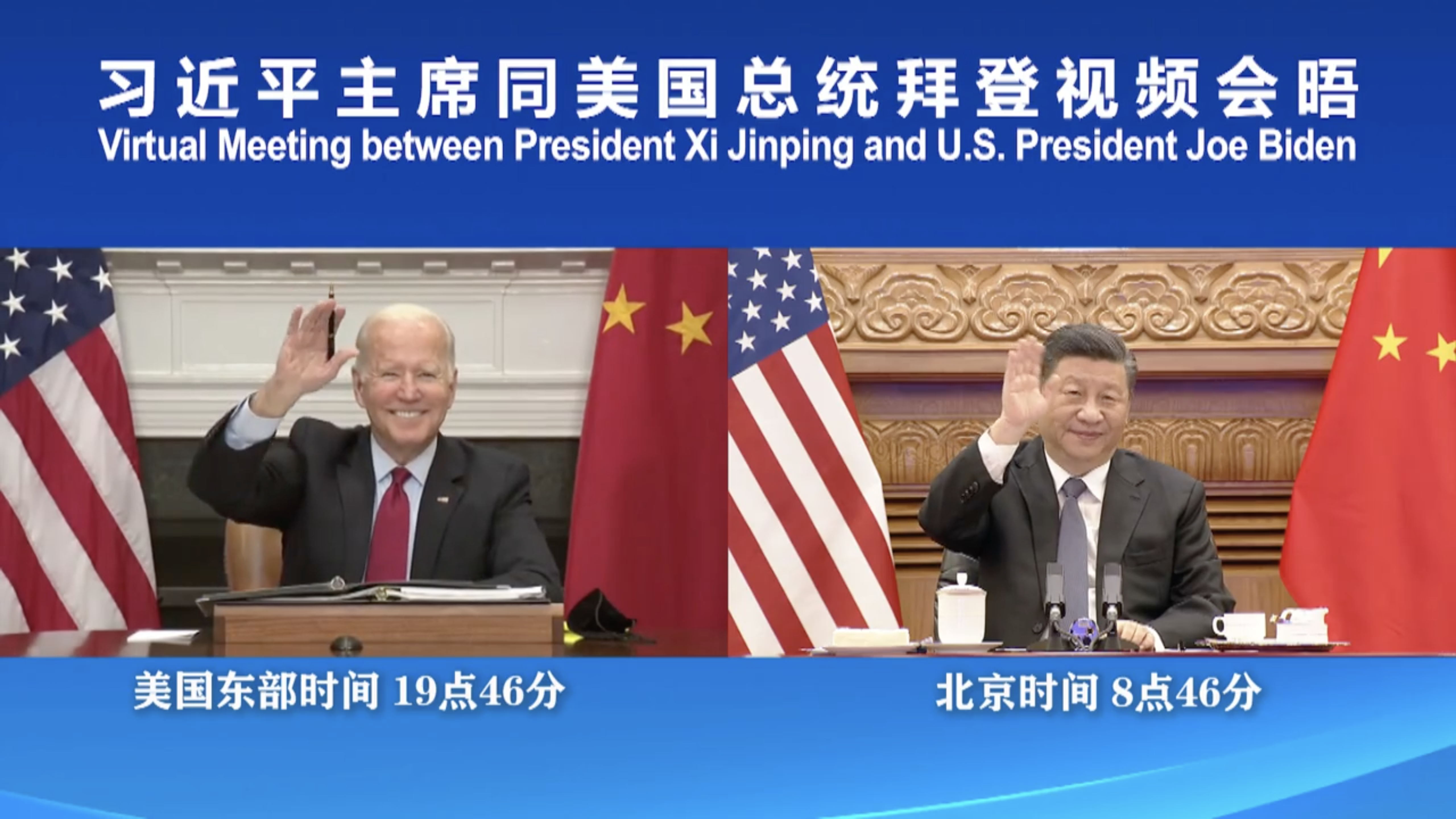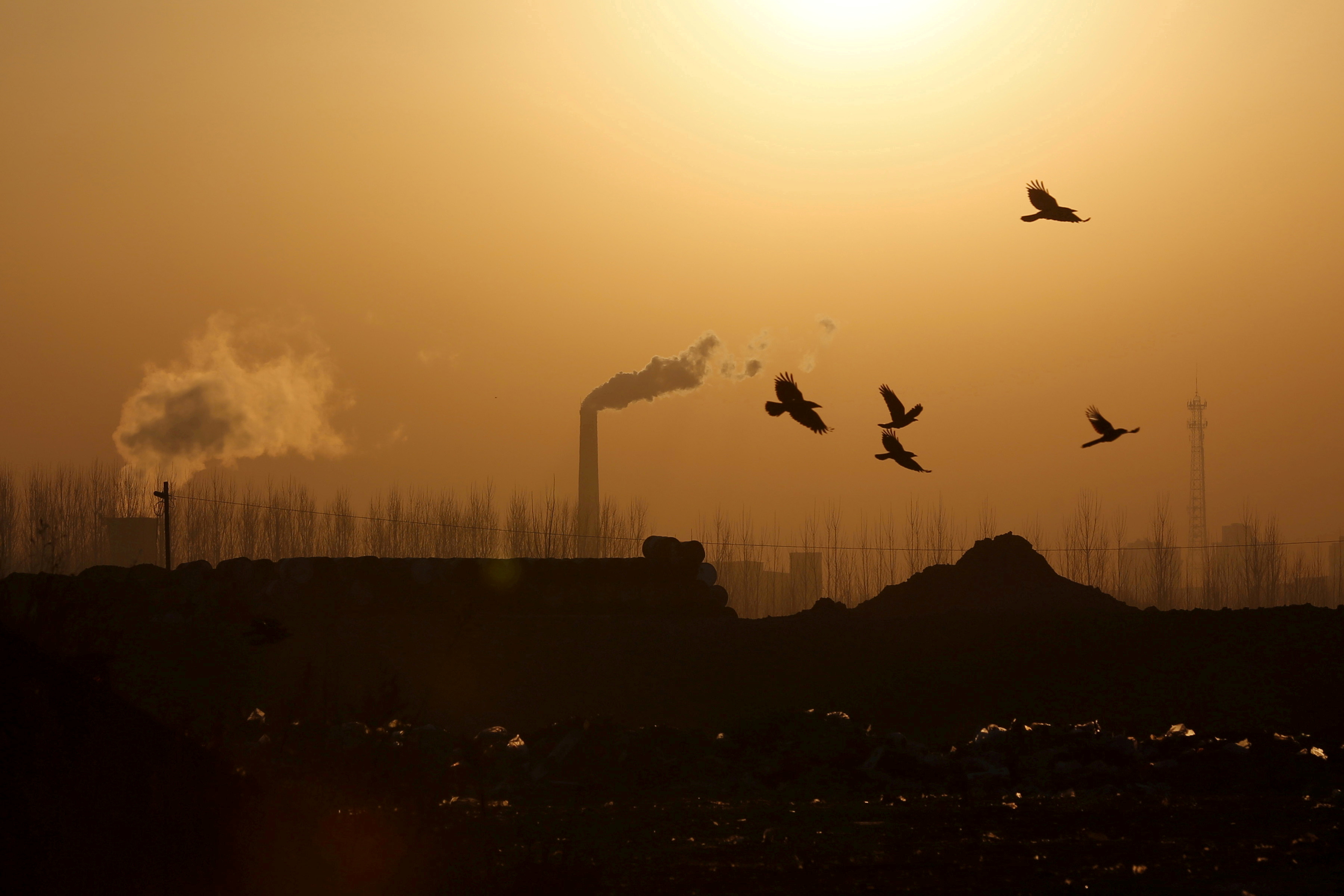
As new disconcerting realities set in, the presidents of the two superpowers across the Pacific held a virtual summit on Tuesday. It was the first meeting between Chinese President Xi Jinping and his U.S. counterpart Joe Biden since the latter assumed office and followed two phone calls in February and September. The talks stretched for three-and-a-half hours, longer than planned, spanning myriad issues of mutual concern ranging from Taiwan to trade to climate change.
The meeting had an air of affability, given that the two leaders have been friends since they were vice presidents. Xi and Biden have a long-term personal friendship, having met 11 times in person over the years, according to Li Cheng, director of the John L. Thornton China Center at Brookings.
Experts from both sides say the talks will help keep tensions at bay. "Biden sent a goodwill message by reaffirming that the U.S. does not support 'Taiwan independence'," said Wang Huiyao, founder of the Center for China and Globalization (CCG), a Beijing-based think tank. "Acknowledging the one-China policy constitutes one of the foundations for bilateral ties to forge ahead."
Misjudgment and miscalculation between the world's two largest economies have led to uncertainties on the global landscape in addition to tanking bilateral ties. "Shunning miscalculation is what Beijing and Washington need most at the moment," said Wang Yong, director of the Center for American Studies at Peking University.
02:48

Why now?
Besides global challenges, notably the pandemic and climate change, U.S. domestic issues also played a role in precipitating the meeting, according to Wang Yong. "Dwindling support, high inflation, the debt-ceiling issue… are making it all the more urgent to restore a relationship with China," he said.
In October, U.S. consumer prices surged by 6.2 percent, tossing the inflation rate to the highest since 1990. Meanwhile, demand has far exceeded supply. Ports are choked, shelves are half empty. "China can help with the spawning supply-chain crisis in the U.S., especially at a time when Biden's approval rating slipped to a new low amid rising economic discontent," Wang Yong said.
On top of that, he noted that some key American allies, including France, Germany, Singapore and South Korea, are unwilling to take sides between China and the U.S. "No head-on clash is wanted," he said.
Wang Huiyao, who is also a counselor for China's State Council, believes that a sequence of events resulted in the talks, starting with American diplomat John Kerry's visit to China in April. In March, diplomacy gave way to heated rhetoric in Alaska at the first high-level U.S.-China meeting of the Biden presidency.
The current climate envoy and a close friend of Biden is credited with bringing about a change in the stifling atmosphere. "Kerry's meeting with his Chinese counterpart Xie Zhenhua on climate issues in April and September paved the way for more top-level meetings between the two nations," Wang Huiyao said.
In August, Wall Street veteran John Thornton, a friend of several senior Chinese officials since the '90s, paid a visit to China, a trip likened to Kissinger's secret 1971 trip. He spent six weeks traveling as far as Xinjiang, a region in the center of contention over human rights allegations. "I had a conversation with Thornton in Shanghai upon his arrival. He knows China, its past and its system deeply," Wang Huiyao said by phone. "At a time like this, we need someone like him to relay messages between the two nations."
Did the meeting repair relations?
The meeting amounts to a turning point and helps prevent bilateral ties from entering a further downward spiral. Yet there is more work to be done as misunderstandings and grievances on both sides have been seething for years.
Shi Yinhong, director of the Center on American Studies at Renmin University, attributes the root of the Beijing-Washington cacophony to China's unexpectedly fast development. After the dissolution of the Soviet Union in 1991, a bipolar world phased to a unipolar one dominated by the U.S. For close to 20 years, the U.S. was the sole superpower and remained unchallenged until the rise of China.
Since China adopted its reform and opening-up policy, annual economic growth averaged some 10 percent for the next four decades, its soft power grew accordingly and it eventually became a superpower capable of challenging U.S. hegemony. In 1990, China's GDP was $360.9 billion, only 6 percent of the $5.963 trillion of the U.S. In 2020, the figure was $14.72 trillion, 70 percent of that of the U.S.
Wang Huiyao shared with CGTN a conversation he had with American political scientist Graham Allison, the author of "Destined for War: Can America and China Escape Thucydides's Trap?": "Graham Allison gave an example: In Boston, a bridge in front of Harvard had entered construction for a year and still was not finished; Beijing's Sanyuan Bridge was built in a couple of nights. That is pretty scary. They take their eyes off the South China Sea for a minute, then suddenly there is a new island. Stuff like that makes them a little nervous."
China's efficiency in hi-tech leaps out, as well. "When China continued to make breakthroughs in space technology in the 2000s, the U.S. felt pressured," Shi said during an interview. "In 2011, U.S. lawmakers introduced a bill known as The Wolf Amendment, prohibiting NASA from engaging in cooperation with the Chinese government and affiliated organizations. Since then, the possibility of China-U.S. cooperation in space has been cut off."
A scholar specializing in military affairs, Shi believes the challenges China faces are too comprehensive to be resolved in the short term.

Climate is one of the major areas China and the U.S. have been working on. /Reuters
Climate is one of the major areas China and the U.S. have been working on. /Reuters
How far Beijing and Washington can go following the Xi-Biden summit, which was initiated by Biden, largely depends on the U.S.
China has been upholding the three principles in dealing with the U.S. – mutual respect, peaceful coexistence and win-win cooperation – as Xi mentioned at the meeting. Biden reiterated that the U.S. does not seek to change China's system. "He conveys an important message," Wang Huiyao said. "Nonetheless, since it runs counter to Washington's mainstream sentiment toward China, Biden puts on a high-wire act in drawing ire from China hawks in the White House."
After all, a tough China policy has been one of the few bipartisan consensuses in Washington.
There's hope, though. After the last few years of turbulence, the two sides discovered that they can't be separated. This phase of the relationship is "not a cold war, owing to the high degree of interdependence, it is much more than a typical trade dispute," as American political scientist Joseph Nye put it in "Consensus or Conflict? China and Globalization in the 21st Century" published by CCG last month.
The meeting has paved the way for the two countries, which see their power reaching parity, to get ahead in a more pragmatic manner.
"China and the U.S. pledged to cut emissions at the COP26 climate talks in a joint declaration, formulating detailed environmental standards of reducing emissions of greenhouse gases in the 2020s. It's expected that the framework will soon apply to other areas, including the economy and military, but we have to wait and see," Wang Yong pointed out.

